Eight incredible tales of wilderness survival.
Nothing is more terrifying than a wilderness survival situation. In one jolting moment, you are torn from safety and security and thrown into profound peril. You are alone, with little more than your wits and endurance keeping you alive. It’s the stuff of nightmares. And, of course, the stuff of movies and television. Think Tom Hanks in Cast Away. Or James Franco in 127 Hours. Or, if you’re a reality TV fan, Naked and Afraid. The theme of man- or woman-against-nature is as old as literature.
Older, in fact…hear me out.
I believe it’s a part of our basic biology. Think about it: We all are descended from at least one individual who found himself or herself alone in the wild, possibly left for dead, and then somehow beat the odds and made it back to safety. That little speck of DNA that survived along with that person has been passed down through a dozen or a hundred or a thousand generations—to me, to you, to all of us. Which is why our curiosity is triggered and our adrenaline begins to surge when we see or hear or read about someone who defies the odds and stumbles out of an impenetrable jungle or washes up on a distant shore.
One of the most enduring survival stories in the annals of popular fiction is Robinson Crusoe, the tale of a shipwrecked traveler who spends 28 years on a relentlessly hostile island somewhere in the Caribbean. The book was first published in 1719 and was an immediate sensation. Many readers believed it to be a real-life account and wondered how they might fare in similar circumstances. This was a new genre, “realistic fiction,” and author Daniel DeFoe had clearly tapped into that primal wiring all humans share. Although the plot details of Robinson Crusoe leaped from the fertile imagination of DeFoe, the inspiration for the title character almost certainly came from the incredible tale of Alexander Selkirk, our first of eight remarkable survival stories.
ALONE ON AN ISLAND
Selkirk was a 20-something Scottish privateer during the War of Spanish Succession, a conflict that embroiled all of Western Europe and its colonies in the early 1700s and helped England become a world economic power. Selkirk’s impulse control left much to be desired. He actually had chosen a life at sea over showing up in court to face charges of “indecent conduct in church.” In 1704, he was serving aboard the Cinque Ports in the Pacific, fighting French ships and plundering Spanish mining settlements in South America. When his captain, Thomas Stradling, overloaded the leaky ship on a resupply stop in Mas a Terra, an uninhabited island off the coast of Chile, Selkirk insisted he would not sail unless much-needed repairs were made. Captain Stradling took the unruly Selkirk at his word and abandoned him on the island with a musket, hatchet, knife, cooking pot and Bible. The Cinque Ports sailed away…and soon sank.
resupply stop in Mas a Terra, an uninhabited island off the coast of Chile, Selkirk insisted he would not sail unless much-needed repairs were made. Captain Stradling took the unruly Selkirk at his word and abandoned him on the island with a musket, hatchet, knife, cooking pot and Bible. The Cinque Ports sailed away…and soon sank.
Selkirk set up camp on the beach, living off lobsters and waiting for another ship to sail by. His first of many rude awakenings came during mating season for thousands of sea lions, which chased him off the beach and into the island’s interior. There he lived off wild turnips and cabbage, as well as feral goats, when he could catch them. Unfortunately, Selkirk found himself plagued by rats, which attacked him every night after the sun went down. He solved this problem by using goat milk and meat to domesticate wild cats that lived on the island. They kept the rodent population at bay. Two ships did show up, but both were Spanish. One spotted him and sent ashore a landing party to capture him. Had they been successful, Selkirk would likely have been executed.
Four years and four months after being marooned, Selkirk was finally rescued by an English privateer and went back to his plundering ways like a man making up for lost time. Still an impetuous risk-taker, he was given command of his own ship and enjoyed several successful forays into Spanish territories. He made enough to retire comfortably in London, and his story made him something of a celebrity there, but soon Selkirk grew restless and he joined the Royal Navy, probably to avoid the long arm of the law or some other offended party. He lived an eventful life and was buried at sea after contracting yellow fever at the age of 45.
BEAR NECESSITIES
Another familiar story inspired by a real-life tale of survival is The Revenant, the 2015 film starring Leonardo DiCaprio. A “revenant” is someone who has been revived from death. Leo plays Hugh Glass, a frontiersman who, while serving on a westward expedition in 1823, was badly mauled by a grizzly bear in current-day South Dakota. He managed to kill the bear before losing consciousness, but suffered  what appeared to be mortal wounds. After dragging the unresponsive Glass on a litter two days, the expedition’s leader decided he was slowing down their progress and assigned two members of the party to stay with him until he died. While the two men waited for the inevitable, they dug a shallow grave. When the inevitable didn’t come quickly enough, they stripped Glass of his valuables and placed him in the hole they had dug. When the men caught up with the expedition they dutifully reported the sad news of their companion’s demise.
what appeared to be mortal wounds. After dragging the unresponsive Glass on a litter two days, the expedition’s leader decided he was slowing down their progress and assigned two members of the party to stay with him until he died. While the two men waited for the inevitable, they dug a shallow grave. When the inevitable didn’t come quickly enough, they stripped Glass of his valuables and placed him in the hole they had dug. When the men caught up with the expedition they dutifully reported the sad news of their companion’s demise.

You probably know the story. Glass awoke sometime later to find himself alone and under the skin of the bear that had attacked him—with a broken leg and deep, festering wounds. He set his own leg and allowed maggots to feast on his dying flesh in order to prevent gangrene. He survived on berries and roots. Glass dragged himself to the Cheyenne River, made a crude raft, and floated down to Fort Kiowa—a six-week journey covering 200 miles. After recovering from his injuries, Glass set out to exact murderous revenge on the two men who left him for dead.
Glass caught up with one of them, a teenager named Bridges, where the Bighorn River empties into the Yellowstone River. Seeing how young Bridges was, he decided to spare him. He found the second man, named Fitzgerald, in Nebraska. Fitzgerald had joined the army and was stationed at Fort Atkinson. Knowing he would be executed if he killed a U.S. soldier, Glass spared Fitzgerald, too, but warned him that he had better make the military a lifelong commitment—because the day he left the army he would end him. Glass never got the chance. He returned to frontier life and was killed during a skirmish with an Arikira war party. If you haven’t seen The Revenant, don’t worry about spoilers here; the movie is what they called a “fictionalized” version of the true story.
SNOWBOUND
Jan Baalsrud’s story sounds like it must be fiction. A Norwegian commando fighting for the resistance against Nazi occupiers during World War II, Balsruud and 11 compatriots set out to destroy an airfield control tower in the winter of 1943. Their mission was compromised when they mistook a local shopkeeper for their resistance contact (both men had the same name) and the shopkeeper—fearing he was being tested by the Germans—turned them in. The next morning, Baalsrud’s boat, which was loaded with 100 kilos of explosives, was sunk and everyone except Baalsrud was either killed or captured.
Baalsrud, soaking wet and missing one boot, hid in a snow gully, where he disarmed and shot a Gestapo officer with his own luger. From there, the Norwegian evaded capture for two months, surviving in frigid conditions with occasional assistance from locals. Suffering from snow blindness and frostbite, Baalsrud amputated his toes with a pocketknife to avoid gangrene.
Baalsrud hid from German patrols behind a snow wall for weeks and then was transported by stretcher to the Finnish border. Now near death, he was taken by a group of native Samis by reindeer to neutral Sweden. After months of recovery, Baalsrud made his way to Scotland, where he trained fellow Norwegian commandos. Eventually, he returned to Norway, where he worked as a secret agent until the end of the war. Baalsrud lived to the age of 71. At his request, his ashes were buried in the same grave with one of the partisans who had aided him during his escape from the Nazis in 1943, and paid the ultimate price.

SOUNDS BANANAS
Staying alive in the wild often depends on one’s ability to take advantage of the local animals. Marina Chapman’s spin on this rule of wilderness survival is a jaw-dropper. Around 1960, she was abducted as a toddler and then left for dead deep in the Colombian rainforest when her kidnappers, possibly realizing that her family would be unable to afford a ransom payment, dumped her and drove away. She walked for days, hoping to find a village and crying for help that never came. What she found was a troop of capuchin monkeys, who eventually adopted her. She knew she had been accepted into the group when the monkeys urinated on her leg and, later, when they groomed her and allowed her to groom them. For as long as five years—Marina has no way to say for sure—she lived with the capuchins. During that time, she managed to decipher how they communicated and was able to produce a vocabulary of whistles, coos, chirps and high-pitched screams. She said all they (and she) thought about was what they would eat each day.
By the time Marina was “rescued” by a pair of hunters, she had forgotten how to speak. They sold her to a brothel, where she did housework but managed to escape before being forced into prostitution. She used her “monkey skills” to survive as a street urchin in the town of Cucata before being taken in by a family in Bogota around the age of 14. She decided to name herself Marina after a Colombian beauty queen and eventually went to England as the family’s nanny. She married an Englishman and had a family of her own.

Marina taught her children how to climb trees and liked to tell them bedtime stories about hunting for food in the jungle. Sometimes she’d walk around the yard on all fours. And she could spot a snake from hundreds of feet away. The kids thought she was just being funny until they were old enough to hear the whole story—which Marina struggled to tell because her brain still functioned in a non-linear way. Finally, they encouraged her to write a book, The Girl with No Name. Several publishers turned it down, refusing to believe it could be true. To this day, many doubt Marina’s story. True or not, it’s quite a tale.
FALL GIRL
A jungle survival adventure of an altogether different kind began on Christmas Eve 1971, two miles in the air, when a Lockheed Electra passenger plane was struck by lightning and broke apart, spilling its passenger into the angry sky. Seventeen-year-old Juliane Koepcke, the daughter of German parents working in Peru, was still strapped in her seat when it detached from the fuselage. Her mother, who was sitting beside her, disappeared as the entire row of seats plummeted to the earth.
Koepcke regained consciousness and soon realized she was the only crash survivor. Experts theorize that the row of seats acted as a parachute, perhaps catching an updraft and, in addition, that the jungle canopy must have broken her fall. Even so, she suffered a broken collarbone, deep gashes in an arm and leg, and facial trauma. Koepcke pocketed some candy she found at the crash site and then activated the wilderness skills she learned while growing up in the Peruvian jungle with her father, a biologist, and her mother, an ornithologist. Koepcke found a river and waded downstream in knee-deep water for 10 days before discovering a small boat. She poured gasoline over her wounds to sterilize them and then fell asleep in the vessel. She was discovered the following morning by a group of fishermen, who transported her to the nearest village. Koepcke was reunited with her father, who was stunned to see her alive. She then led the recovery team to the crash site.
Koepcke pocketed some candy she found at the crash site and then activated the wilderness skills she learned while growing up in the Peruvian jungle with her father, a biologist, and her mother, an ornithologist. Koepcke found a river and waded downstream in knee-deep water for 10 days before discovering a small boat. She poured gasoline over her wounds to sterilize them and then fell asleep in the vessel. She was discovered the following morning by a group of fishermen, who transported her to the nearest village. Koepcke was reunited with her father, who was stunned to see her alive. She then led the recovery team to the crash site.
Running on Empty
Have you ever asked your iPhone “Where am I?” If it’s a geography question (as opposed to a career or relationship question) you’ll get an accurate answer that even includes a map. Thanks to GPS and online tools like Waze, getting lost is no longer the terror-inducing situation it was just a generation ago. Mauro Prosperi might be reluctant to admit it, but he really could have used one of those apps. He was competing in the 1994 Marathon of the Sands, a multi-day endurance race across Morocco’s slice of the Sahara Desert when a sandstorm separated him from the pack and left him alone and disoriented. Prosperi thought he was catching up, but he was actually running into neighboring Algeria.
an accurate answer that even includes a map. Thanks to GPS and online tools like Waze, getting lost is no longer the terror-inducing situation it was just a generation ago. Mauro Prosperi might be reluctant to admit it, but he really could have used one of those apps. He was competing in the 1994 Marathon of the Sands, a multi-day endurance race across Morocco’s slice of the Sahara Desert when a sandstorm separated him from the pack and left him alone and disoriented. Prosperi thought he was catching up, but he was actually running into neighboring Algeria.
Out of water and realizing the magnitude of his error, Prosperi grew despondent and attempted to slit his wrists. However, he was so dehydrated that the blood clotted almost instantly. Then he recalled a bit of advice a Berber nomad had offered before the race: When in doubt, walk in the direction of the morning clouds. And so, he set off again. Eating lizards, bugs and cacti, Prosperi made it to a desert oasis and was rescued, 40 pounds lighter than when he had started nine days earlier. He had run, walked and crawled 300 kilometers in the wrong direction.
In 1998, Werner Herzog made the film Wings of Hope, based on Koepcke’s remarkable story. It was a very personal project for the famed director. In 1971, he had been scouting locations in South America and was booked on Koepcke’s ill-fated flight…but missed it due to a last-minute change in his schedule.
WHALE OF A TALE
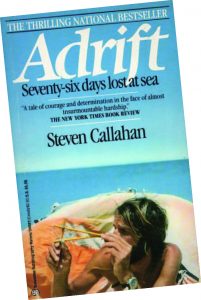 Just because you can build a boat, it doesn’t mean you should be sailing it by yourself. Steve Callahan, a naval architect and avid sailor, designed and constructed the Napoleon Solo and sailed it across the Atlantic to England in 1981. So far so good. From the port of Penzance, at the extreme southwest tip of England, he joined a single-handed sailing race to Antigua in January 1982. Foul weather off the coast of Spain swamped many of the entries, including the Napoleon Solo, but Callahan made repairs and, though he was now out of the running, decided to complete the journey anyway. One week later, the vessel’s hull was punctured during a night storm in a collision with a whale. Callahan had time to collect a few items, including the book Sea Survival, by Dougal Robertson. He climbed into a six-person life raft and watched his foundering ship drift away.
Just because you can build a boat, it doesn’t mean you should be sailing it by yourself. Steve Callahan, a naval architect and avid sailor, designed and constructed the Napoleon Solo and sailed it across the Atlantic to England in 1981. So far so good. From the port of Penzance, at the extreme southwest tip of England, he joined a single-handed sailing race to Antigua in January 1982. Foul weather off the coast of Spain swamped many of the entries, including the Napoleon Solo, but Callahan made repairs and, though he was now out of the running, decided to complete the journey anyway. One week later, the vessel’s hull was punctured during a night storm in a collision with a whale. Callahan had time to collect a few items, including the book Sea Survival, by Dougal Robertson. He climbed into a six-person life raft and watched his foundering ship drift away.
Callahan’s first move was to activate the raft’s E-PIRB (Electronic Position Indicating Radio Beacon). In 2021, this would lead to a quick rescue. But in 1982, satellites did not monitor E-PIRB signals, and the raft was in the “fat” part of the Atlantic that commercial airliners did not use, so no one else was close enough to detect the E-PIRB. As days turned into weeks, Callahan put Robertson’s words into action. He noticed that a kind of ecosystem developed around his raft and was able to spear or hook a variety of fish. He also created a sun still and other improvised devices that produced a pint of water a day. Callahan fended off sharks, repaired punctures, lost a third of his bodyweight and endured painful saltwater sores for 76 days before drifting to the coast of Guadeloupe.
the raft was in the “fat” part of the Atlantic that commercial airliners did not use, so no one else was close enough to detect the E-PIRB. As days turned into weeks, Callahan put Robertson’s words into action. He noticed that a kind of ecosystem developed around his raft and was able to spear or hook a variety of fish. He also created a sun still and other improvised devices that produced a pint of water a day. Callahan fended off sharks, repaired punctures, lost a third of his bodyweight and endured painful saltwater sores for 76 days before drifting to the coast of Guadeloupe.
After his ordeal, Callahan became a regular contributor to sailing magazines and also designed a lifeboat based on his survival experience. Callahan also wrote the novels Adrift and Capsized. During the making of the 2012 film Life of Pi, director Ang Lee hired Callahan as a consultant to make life aboard a drifting lifeboat more realistic. Callahan fashioned the various fishing lures and other tools that were used by Suraj Sharma throughout the movie.
A FISHY STORY
Callahan called the open ocean the world’s great wilderness. He gets no argument from Jose Alvarenga. An experienced Pacific fisherman, he set out from Costa Azul in Mexico on November 17, 2012 in a 23-foot fiberglass skiff with a big icebox and single outboard motor. His usual fishing partner was unavailable, so he took on a young, inexperienced assistant named Ezequiel Cordoba, whom he had never met before. The two men brought in 1,000 pounds of fish the first day, but a sudden storm prevented them from returning to port. For five straight days, the storm blew them ever deeper into the ocean, destroying the boat’s motor and electronics, and causing them to lose all of their fishing equipment. They had to dump their heavy catch when the vessel became impossible to maneuver.
Fortunately, Alvarenga had managed to transmit a distress signal to the boat’s owner before going radio silent. Unfortunately, the ensuing search effort turned up nothing and was called off after two days. Alvarenga and Cordoba survived by catching fish and seabirds with their hands. After four months with no sign of rescue, apparently Cordoba gave up. He refused to eat and, after securing a promise from Alvarenga not to eat him, he slipped away and Alvarenga dumped his body over the side. Over the next nine-plus months, Alvarenga spotted several container ships in the distance but was unable to attract their attention. On January 30, 2014, he saw a speck of land on the horizon—it was a remote corner of the Marshall Islands, more than 5,500 miles from where he had started. When Alvarenga drifted close enough, he leaped out of the boat and swam to shore. Two locals encountered him on the beach naked and waving a knife, barely able to stand and screaming in Spanish.
At first, no one believed Alvarenga’s story. It seemed implausible that he could have survived 14 months on the open sea; no one had ever survived more than a year under those conditions. Scurvy should have killed him, or so the thinking went. However, the vitamin C he got from the birds and turtles he ate probably saved him. Various ocean scientists studied Alvarenga’s claims and looked at the meandering mid-Pacific currents. They not only determined that such a trip was plausible, but that he was fortunate to have made it as quickly as he did. Alvarenga later passed a polygraph test, ending any lingering doubts. You may recall seeing Alvarenga on television. For a few news cycles back in those innocent days of 2014, he was the lead story. Later, Alvarenga gave a series of interviews to investigative journalist Jonathan Franklin, who published 438 Days: An Extraordinary True Story of Survival at Sea. Finally, and perhaps predictably, Ezekiel Cordoba’s family then sued him for cannibalism.
There are really important lessons to be learned from each of these remarkable tales of survival. If you’d like to know what they are, ask someone else. Or pick up a copy of Field & Stream or Soldier of Fortune. Not being an outdoorsman myself, I have no idea what they are—with the obvious exception of “If you’re thinking about doing something risky beyond the reach of civilization…don’t.”
Did You Know??
Survival stories generate important information about how humans do without food and water. An individual in good health can last a week without food and water before vital organs completely shut down, assuming physical activity is kept to a minimum. Without food, the body needs about 1.5 liters of water (plus a teaspoon of salt) a day to maintain fluid levels. Unfortunately, we know this from hunger strikes.
My stronger, more adventurous camping cousin, who had to get himself to a hospital following a surprisingly serious fly-fishing injury, would no doubt correct me. He’d say, “Aw, go ahead and do it…just do it with someone else.”
That’s fine, I guess, as long as that someone else isn’t me.
 The Office Beer Bar & Grill • Truffled Tots
The Office Beer Bar & Grill • Truffled Tots Paragon Tap & Table • Beer Brined Pork Chop
Paragon Tap & Table • Beer Brined Pork Chop The Black Horse Tavern & Pub • Goffles Farm Chicken Breast
The Black Horse Tavern & Pub • Goffles Farm Chicken Breast Piattino Neighborhood Bistro • Pan Seared Atlantic Salmon
Piattino Neighborhood Bistro • Pan Seared Atlantic Salmon George and Martha’s American Grille • Crispy Jumbo Lump Crab Croquettes
George and Martha’s American Grille • Crispy Jumbo Lump Crab Croquettes The Office Tavern Grill • Maryland Blue Crab Dip
The Office Tavern Grill • Maryland Blue Crab Dip Daimatsu • Sushi Pizza
Daimatsu • Sushi Pizza Publick House • Roasted Long Island Duck Breast
Publick House • Roasted Long Island Duck Breast
 Café Z • Hot “Z” Shrimp
Café Z • Hot “Z” Shrimp Chestnut Chateau • Black Seabass
Chestnut Chateau • Black Seabass Mario’s Tutto Bene • Vinegar Pork Chops
Mario’s Tutto Bene • Vinegar Pork Chops The Manor • Surf and Turf
The Manor • Surf and Turf

 BANKING ON THE VALUE OF PARTNERSHIPS
BANKING ON THE VALUE OF PARTNERSHIPS BIG BOYS DON’T CRY
BIG BOYS DON’T CRY
 Often, literally. There are LPs galore as decor and a deejay at a computer taking requests. I somewhat hesitantly ask for John Coltrane and, within a minute, get a couple tracks of Coltrane. We take menus from a tuned-in server and receive a concise, but not condescending primer on how to navigate a rather novel bill of fare. We dig into a series of dishes that connect the accessible to the adventurous and fall in love with Roosterspin’s cuisine—and concept.
Often, literally. There are LPs galore as decor and a deejay at a computer taking requests. I somewhat hesitantly ask for John Coltrane and, within a minute, get a couple tracks of Coltrane. We take menus from a tuned-in server and receive a concise, but not condescending primer on how to navigate a rather novel bill of fare. We dig into a series of dishes that connect the accessible to the adventurous and fall in love with Roosterspin’s cuisine—and concept. It is time for another small plate, which is how you can start here or dine straight through. Slurp map chae, sizzling skinny sweet potato noodles spliced with beef, wild mushrooms and shards of Asian vegetables. Bright and unexpectedly light are the seafood patties known as seafood jeon, packed with calamari, shrimp and vegetables and bound by egg. If you are looking for something hearty, snag galbi LA cut, a signature dish here, is a perfect partnership of silky short ribs with rice cakes and vegetables served with a nod to beloved Korean barbecue. Looking for light? The mango salad, flush with pretty beets and sweet potatoes and dressed with sesame, is a dandy mix of flavors that you will have a hard time separating ever again.
It is time for another small plate, which is how you can start here or dine straight through. Slurp map chae, sizzling skinny sweet potato noodles spliced with beef, wild mushrooms and shards of Asian vegetables. Bright and unexpectedly light are the seafood patties known as seafood jeon, packed with calamari, shrimp and vegetables and bound by egg. If you are looking for something hearty, snag galbi LA cut, a signature dish here, is a perfect partnership of silky short ribs with rice cakes and vegetables served with a nod to beloved Korean barbecue. Looking for light? The mango salad, flush with pretty beets and sweet potatoes and dressed with sesame, is a dandy mix of flavors that you will have a hard time separating ever again. Palisades Park’s next-door neighbor, Fort Lee, also boasts a large Korean population, as well as a robust commercial section featuring Korean shops and restaurants, which stretches from just south of the George Washington Bridge north to Englewood Cliffs. Two of the best are Gammeeok on Main Street and Dong Bang Grill on Palisade Avenue. Besides traditional Korean fare, Dong Bang Grill also does a brisk business at the sushi bar—which is saying something, considering the number of excellent Japanese restaurants in Fort Lee.
Palisades Park’s next-door neighbor, Fort Lee, also boasts a large Korean population, as well as a robust commercial section featuring Korean shops and restaurants, which stretches from just south of the George Washington Bridge north to Englewood Cliffs. Two of the best are Gammeeok on Main Street and Dong Bang Grill on Palisade Avenue. Besides traditional Korean fare, Dong Bang Grill also does a brisk business at the sushi bar—which is saying something, considering the number of excellent Japanese restaurants in Fort Lee.

 The biggest benefit of a well-cation is the jump-start it offers toward reaching your wellness goal. Staying on-program is much easier when the stresses of everyday life are removed and only healthy activities and meals are offered. And since guests share the same outlook, they support one another to stay committed toward reaching their wellness goals. The investment in a wellness vacation continues to pay off when new habits take hold after the vacation has ended. This may explain why the number of people who are investing their time and money in wellness-related travel has been on the rise. The worldwide wellness tourism market—estimated by some at over $400 billion—has been growing steadily since 2007, increasing nearly 13 percent last year.
The biggest benefit of a well-cation is the jump-start it offers toward reaching your wellness goal. Staying on-program is much easier when the stresses of everyday life are removed and only healthy activities and meals are offered. And since guests share the same outlook, they support one another to stay committed toward reaching their wellness goals. The investment in a wellness vacation continues to pay off when new habits take hold after the vacation has ended. This may explain why the number of people who are investing their time and money in wellness-related travel has been on the rise. The worldwide wellness tourism market—estimated by some at over $400 billion—has been growing steadily since 2007, increasing nearly 13 percent last year. There are a number of weight loss retreats in the region, including the Copperhood Retreat & Spa in the Catskills. It has been touted as one of the best in the world. The three-night detox plan costs about $1,500, while the 21-day “Break Your Bad Habits” plan rate is about $8,000, depending on what level of accommodations is chosen.
There are a number of weight loss retreats in the region, including the Copperhood Retreat & Spa in the Catskills. It has been touted as one of the best in the world. The three-night detox plan costs about $1,500, while the 21-day “Break Your Bad Habits” plan rate is about $8,000, depending on what level of accommodations is chosen. Detoxification
Detoxification Fitness
Fitness

 The six ways to assess a problem are by looking at the areas of Thought, Emotion, Action, Frequency, Duration and Intensity. Thought refers to how we think about and view our problem. Are our thoughts, for example, helping to solve our problem? Or are they self-critical, condemning or working against us and therefore exaggerating or making our problem worse? Emotion refers to the feelings that a problem brings up in us, and how we handle those feelings. Can we name what we are feeling (e.g. sad, anxious, guilty, angry, insecure, shame or rage)? Are we able to make friends with our feelings and get information from them about what we want and need? Or do we let our emotions overwhelm and injure our health? Action refers to the positive or negative behaviors that we do in response to our problem. Does our problem lead us to say bad things to people—or try to shop, drink, smoke, drug or eat our problem away? Frequency refers to how often a problem or difficulty occurs. Does it trouble us once a month, week, day, hour or minute? Duration refers to how long our problem lasts when it comes. Does it cause us to feel bad for a couple of minutes and then go away, or do we feel terrible for hours, days, weeks, months or years? Finally, Intensity refers to the degree of distress the problem causes. Does it lead us to be mildly uncomfortable and irritable, or so intensely upset that we are ready to explode?
The six ways to assess a problem are by looking at the areas of Thought, Emotion, Action, Frequency, Duration and Intensity. Thought refers to how we think about and view our problem. Are our thoughts, for example, helping to solve our problem? Or are they self-critical, condemning or working against us and therefore exaggerating or making our problem worse? Emotion refers to the feelings that a problem brings up in us, and how we handle those feelings. Can we name what we are feeling (e.g. sad, anxious, guilty, angry, insecure, shame or rage)? Are we able to make friends with our feelings and get information from them about what we want and need? Or do we let our emotions overwhelm and injure our health? Action refers to the positive or negative behaviors that we do in response to our problem. Does our problem lead us to say bad things to people—or try to shop, drink, smoke, drug or eat our problem away? Frequency refers to how often a problem or difficulty occurs. Does it trouble us once a month, week, day, hour or minute? Duration refers to how long our problem lasts when it comes. Does it cause us to feel bad for a couple of minutes and then go away, or do we feel terrible for hours, days, weeks, months or years? Finally, Intensity refers to the degree of distress the problem causes. Does it lead us to be mildly uncomfortable and irritable, or so intensely upset that we are ready to explode? Saturn is the God of time. People who use a Saturn strategy—Strategy #6—take time to digest and respond to their problems. This involves patience, long-term planning and Steady, Patient Work over a long period of time. They know that continual small actions enable them to change a situation, whether it’s something about themselves, another person or a relationship.
Saturn is the God of time. People who use a Saturn strategy—Strategy #6—take time to digest and respond to their problems. This involves patience, long-term planning and Steady, Patient Work over a long period of time. They know that continual small actions enable them to change a situation, whether it’s something about themselves, another person or a relationship. Editor’s Note: Dr. Rodger Goddard has served as the Chief Psychologist at Trinitas Regional Medical Center for over 25 years. He is the director of Wellness Management Services, which provides workshops, presentations and programs to companies and schools to improve individual and organizational success. He is also the director of the hospital’s APA-accredited psychology internship program. He can be reached at rgoddard@trinitas.org or (908) 994-7334.
Editor’s Note: Dr. Rodger Goddard has served as the Chief Psychologist at Trinitas Regional Medical Center for over 25 years. He is the director of Wellness Management Services, which provides workshops, presentations and programs to companies and schools to improve individual and organizational success. He is also the director of the hospital’s APA-accredited psychology internship program. He can be reached at rgoddard@trinitas.org or (908) 994-7334.




 “A homeowner can create an effective mesh network with a couple of wifi-enabled thermostats and a handful of plug-in devices that control table lamps,” says Andre Conway, an industry consultant who works with commercial and residential security clients in New Jersey, Pennsylvania and New York. “The beauty of this technology is that the more devices you add, the better the mesh becomes and the smarter your home can be.”
“A homeowner can create an effective mesh network with a couple of wifi-enabled thermostats and a handful of plug-in devices that control table lamps,” says Andre Conway, an industry consultant who works with commercial and residential security clients in New Jersey, Pennsylvania and New York. “The beauty of this technology is that the more devices you add, the better the mesh becomes and the smarter your home can be.”



 My secret? For three decades, I—and now my family of four—have been enjoying a two-bedroom efficiency villa at the family-run Domaine de la Source, just 10 minutes north of the Menton beaches and a half-hour from Monaco for around $1,000 for a week in high season. Once an olive grove, Domaine de la Source offers twelve rental apartments and two pools. It’s hardly the region’s only bargain-priced accommodation, just the one we swear by. We make our own breakfast in the closet-sized but clean kitchen and venture out each day to explore this remarkable part of the Mediterranean coast.
My secret? For three decades, I—and now my family of four—have been enjoying a two-bedroom efficiency villa at the family-run Domaine de la Source, just 10 minutes north of the Menton beaches and a half-hour from Monaco for around $1,000 for a week in high season. Once an olive grove, Domaine de la Source offers twelve rental apartments and two pools. It’s hardly the region’s only bargain-priced accommodation, just the one we swear by. We make our own breakfast in the closet-sized but clean kitchen and venture out each day to explore this remarkable part of the Mediterranean coast. Just west of Monaco, the gardens and museum at Villa Ephrussi Rothschild in Cap Ferrat are like a journey back to the Belle Epoque era. The villa was built in 1905 by the eccentric Mme. Beatrice Ephrussi de Rothschild of the famed banking family, who divorced M. Ephrussi—scion of Russian wheat merchants of The Hare with the Amber Eyes—before his gambling debts and ill-advised speculations could ruin her. The villa showcases her eclectic tastes, ranging from Meissen china and Aubusson carpets to genre art of Boucher and Fragonard to a collection of embroidered silk shoes for Chinese bound feet. Though childless, she treated her dogs, monkeys and mongoose as family, once throwing a lavish mock wedding for Diane and Major, her two poodles. The event featured printed invitations and hundreds of human and canine guests (all in formal attire), including a bulldog sporting a top hat. During the ceremony, the “bride” had a gold ring set in diamonds slipped onto her paw. Mme. Ephrussi de Rothschild was just as passionate about gardening. The grounds offer nine different restored gardens that overlook the Mediterranean and choreographed fountain displays. An audio guide is well worth the $20 fee.
Just west of Monaco, the gardens and museum at Villa Ephrussi Rothschild in Cap Ferrat are like a journey back to the Belle Epoque era. The villa was built in 1905 by the eccentric Mme. Beatrice Ephrussi de Rothschild of the famed banking family, who divorced M. Ephrussi—scion of Russian wheat merchants of The Hare with the Amber Eyes—before his gambling debts and ill-advised speculations could ruin her. The villa showcases her eclectic tastes, ranging from Meissen china and Aubusson carpets to genre art of Boucher and Fragonard to a collection of embroidered silk shoes for Chinese bound feet. Though childless, she treated her dogs, monkeys and mongoose as family, once throwing a lavish mock wedding for Diane and Major, her two poodles. The event featured printed invitations and hundreds of human and canine guests (all in formal attire), including a bulldog sporting a top hat. During the ceremony, the “bride” had a gold ring set in diamonds slipped onto her paw. Mme. Ephrussi de Rothschild was just as passionate about gardening. The grounds offer nine different restored gardens that overlook the Mediterranean and choreographed fountain displays. An audio guide is well worth the $20 fee. We especially enjoy touring the medieval hill towns, sited centuries ago high above the sea to protect the populace from pillaging Saracens. Eze, built above Cap Ferrat, is the most heavily trafficked by tourists. Its narrow lanes, which lead to a chateau, evoke life in the Middle Ages and the town has a stunning panoramic view of the Cote d’Azur. There is a two-Michelin-starred restaurant, Le Chevre d’Or, which is well worth the splurge for a meal (or maybe just a kir royale) near the top of Eze. The less-touristy hill towns of Roquebrune and Gorbio require stellar driving skills and steel nerves to negotiate the narrow roads and hairpin turns. The charming hill towns of Italy, near the French frontier, are also lovely and relatively tourist-free.
We especially enjoy touring the medieval hill towns, sited centuries ago high above the sea to protect the populace from pillaging Saracens. Eze, built above Cap Ferrat, is the most heavily trafficked by tourists. Its narrow lanes, which lead to a chateau, evoke life in the Middle Ages and the town has a stunning panoramic view of the Cote d’Azur. There is a two-Michelin-starred restaurant, Le Chevre d’Or, which is well worth the splurge for a meal (or maybe just a kir royale) near the top of Eze. The less-touristy hill towns of Roquebrune and Gorbio require stellar driving skills and steel nerves to negotiate the narrow roads and hairpin turns. The charming hill towns of Italy, near the French frontier, are also lovely and relatively tourist-free. Across the border from Menton, in Italy, is Hanbury Gardens (left), near Ventimiglia. Built in the 19th century by Lord Hanbury, a British diplomat—who like many travelers of that age gathered exotic flora from far flung lands of the former British Empire—created a landscape with Moorish and Oriental follies. The garden is quite vertical and dramatic, stretching down to the Mediterranean.
Across the border from Menton, in Italy, is Hanbury Gardens (left), near Ventimiglia. Built in the 19th century by Lord Hanbury, a British diplomat—who like many travelers of that age gathered exotic flora from far flung lands of the former British Empire—created a landscape with Moorish and Oriental follies. The garden is quite vertical and dramatic, stretching down to the Mediterranean. The food in the port towns along the Cote d’Azur does not require a second mortgage. There are any number of small restaurants offering thin-crust pizza, fresh salads, mussels, and pain bagnat (a Niçoise version of a tuna sandwich) for a reasonable price. Menton (right) is a lovely old port town with affordable shops and pizzerias and a large Beaux Art farmers’ market selling artisanal baguettes, cured meats and cheeses that are perfect for a beach picnic.
The food in the port towns along the Cote d’Azur does not require a second mortgage. There are any number of small restaurants offering thin-crust pizza, fresh salads, mussels, and pain bagnat (a Niçoise version of a tuna sandwich) for a reasonable price. Menton (right) is a lovely old port town with affordable shops and pizzerias and a large Beaux Art farmers’ market selling artisanal baguettes, cured meats and cheeses that are perfect for a beach picnic. With the Euros we save on pauper-priced lodging, attractions and meals, we like to treat ourselves to at least one gourmet French meal fit for a prince or princess. There is a Michelin two-star restaurant right on the water and right on the Italy/France border called Mirazur. It’s worth every penny of the $100 per person (not including wine) price tag, and you will definitely need reservations. And of course, there are the grand hotel restaurants of Monaco—many on rooftops overlooking the water—which prepare true gastronomic adventures. They are delicious…mais tres cher!
With the Euros we save on pauper-priced lodging, attractions and meals, we like to treat ourselves to at least one gourmet French meal fit for a prince or princess. There is a Michelin two-star restaurant right on the water and right on the Italy/France border called Mirazur. It’s worth every penny of the $100 per person (not including wine) price tag, and you will definitely need reservations. And of course, there are the grand hotel restaurants of Monaco—many on rooftops overlooking the water—which prepare true gastronomic adventures. They are delicious…mais tres cher!
 WELCOMING RETIREMENT
WELCOMING RETIREMENT CUBS WIN
CUBS WIN HEALING RULES
HEALING RULES 20 YEARS… STILL RESPONDING
20 YEARS… STILL RESPONDING TAKING COMMUNITY ACTION
TAKING COMMUNITY ACTION 40 YEARS…STILL ADVANCING
40 YEARS…STILL ADVANCING PREPARED TO LEAD
PREPARED TO LEAD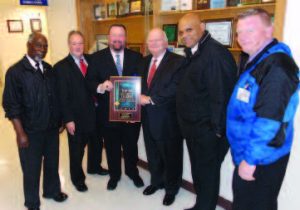 SECURE AROUND THE CLOCK
SECURE AROUND THE CLOCK

 Trinitas has successfully integrated advanced emergency lifesaving treatment methods into the emergency angioplasty treatment process, Dr. D’Angelo points out. “Our team effort uses a ’30-30-30’ rhythm. 30 minutes for EMS responders to reach the patient, perform an EKG, and get the patient to us. 30 minutes for the Emergency Team to receive, stabilize and transport the patient to the cath lab. Then, 30 minutes for the Catheterization Team to open the occluded artery.”
Trinitas has successfully integrated advanced emergency lifesaving treatment methods into the emergency angioplasty treatment process, Dr. D’Angelo points out. “Our team effort uses a ’30-30-30’ rhythm. 30 minutes for EMS responders to reach the patient, perform an EKG, and get the patient to us. 30 minutes for the Emergency Team to receive, stabilize and transport the patient to the cath lab. Then, 30 minutes for the Catheterization Team to open the occluded artery.”



 Andrea S. Zimmern, MD, FACS
Andrea S. Zimmern, MD, FACS
 Do you have a hot topic for Dr. D’Angelo and his Trinitas ER team?
Do you have a hot topic for Dr. D’Angelo and his Trinitas ER team?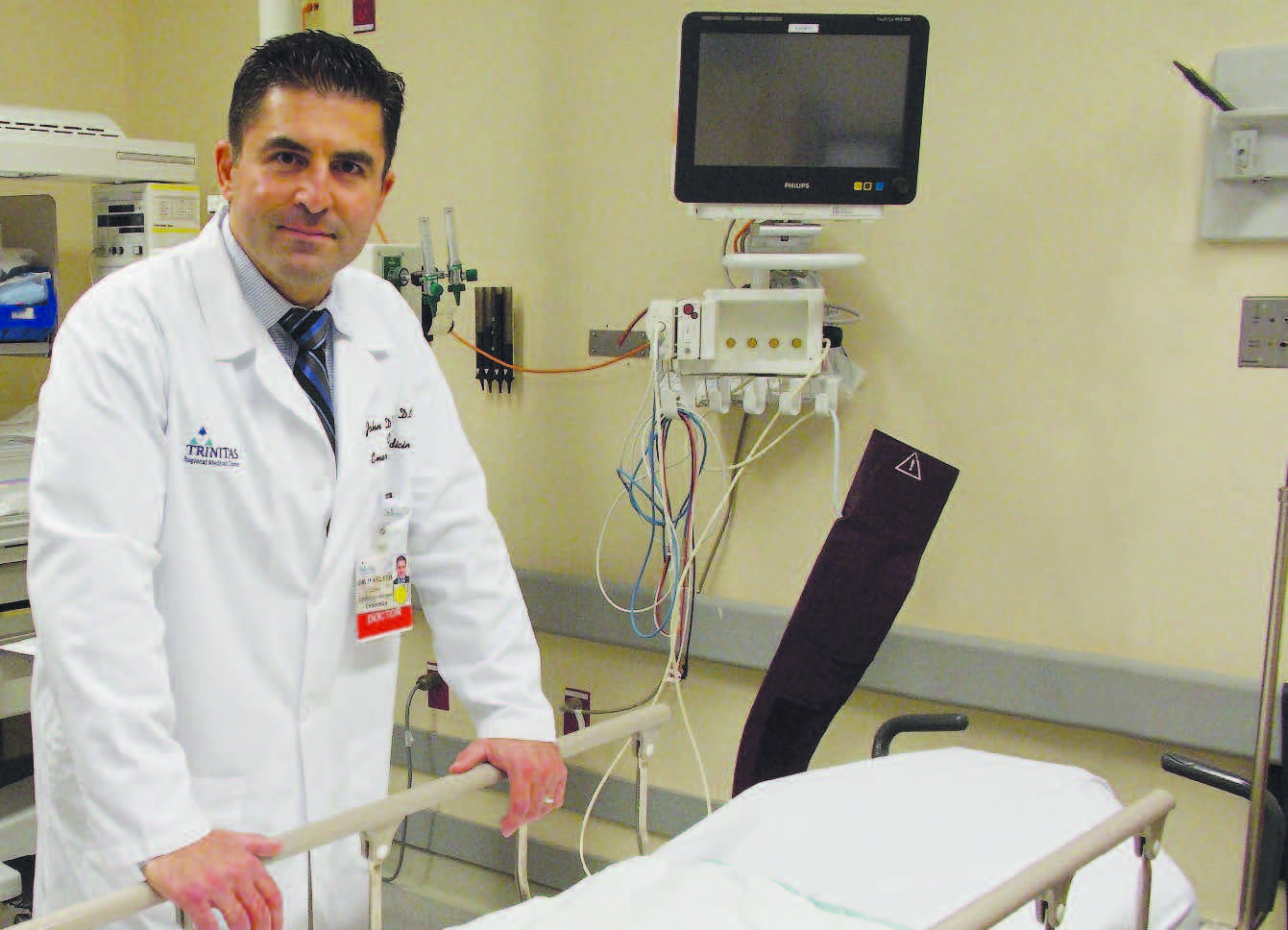
 Experimental Drug Looks Good vs. MRSA
Experimental Drug Looks Good vs. MRSA
 A Blunt Assessment of Marijuana
A Blunt Assessment of Marijuana
 Obesity and the Brain
Obesity and the Brain


 BEAT GENERATION
BEAT GENERATION VISION QUEST
VISION QUEST FINANCIAL AIDE
FINANCIAL AIDE LIGHTEN UP
LIGHTEN UP GET SMART
GET SMART INTO THE WOOD
INTO THE WOOD ON THE BALL
ON THE BALL WARMING TREND
WARMING TREND LOBE STORY
LOBE STORY BACK TO THE FUTURE
BACK TO THE FUTURE SWEET DREAMS
SWEET DREAMS LEG CANDY
LEG CANDY GYM DANDY
GYM DANDY THERE’S THE RUB
THERE’S THE RUB  PAIN MANAGEMENT
PAIN MANAGEMENT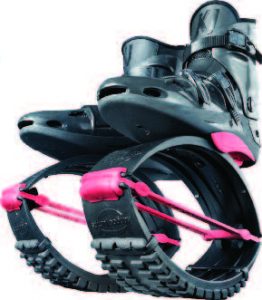 UP IN THE AIR
UP IN THE AIR TOE HOLD
TOE HOLD
 Avid4Adventure in Boulder, CO teaches hiking, biking, climbing and paddling—building skills, grit and determination. “Kids from all over the country come for our outdoor adventures,” says Ileana Street. “Stand-up paddle boarding, rock climbing, and mountain biking are just some of our activity offerings. We make sports inviting not intimidating. It’s empowering to master a new skill and it’s a confidence-booster.” Campers stay in comfortable (but not cushy) cabins, and meal-wise, Avid4Adventure accommodates any kind of diet. Programs change every year so that repeat guests are introduced to new challenges.
Avid4Adventure in Boulder, CO teaches hiking, biking, climbing and paddling—building skills, grit and determination. “Kids from all over the country come for our outdoor adventures,” says Ileana Street. “Stand-up paddle boarding, rock climbing, and mountain biking are just some of our activity offerings. We make sports inviting not intimidating. It’s empowering to master a new skill and it’s a confidence-booster.” Campers stay in comfortable (but not cushy) cabins, and meal-wise, Avid4Adventure accommodates any kind of diet. Programs change every year so that repeat guests are introduced to new challenges. Bold Earth in Golden, CO, offers teenagers an adventure-travel summer camp filled with exploration, learning and discovery. The camp focuses on small groups and promotes leadership, teamwork and excellence in a supportive environment. “We introduce kids, in a very successful way, how to be in the game instead of simply playing the game,” says Abbott Wallis. “There are no locked doors, no HBO, and it’s all super-honest. We teach kids how to connect with others. We turn the entertainment on while turning the computers off. In bringing out laughter, dancing, and singing, we make sure that when kids return home they have a big story to tell—It was incredible…I was incredible.” Since 1976, over 15,000 students from 50 states (and more than 55 countries) have attended Bold Earth. Parents and teens are actually interviewed before being accepted.
Bold Earth in Golden, CO, offers teenagers an adventure-travel summer camp filled with exploration, learning and discovery. The camp focuses on small groups and promotes leadership, teamwork and excellence in a supportive environment. “We introduce kids, in a very successful way, how to be in the game instead of simply playing the game,” says Abbott Wallis. “There are no locked doors, no HBO, and it’s all super-honest. We teach kids how to connect with others. We turn the entertainment on while turning the computers off. In bringing out laughter, dancing, and singing, we make sure that when kids return home they have a big story to tell—It was incredible…I was incredible.” Since 1976, over 15,000 students from 50 states (and more than 55 countries) have attended Bold Earth. Parents and teens are actually interviewed before being accepted. Hi-Hills Day Camp at Gill St. Bernard’s in Gladstone, NJ offers a variety of programs for children ages 3 to 15 across 10 summer weeks. Whether a family’s goal is enrichment, academics, sports, fine arts or traditional camp programs, Hi-Hill has become quite good at offering something for everyone. Traditional camp activities include instructional tennis, yoga, archery, pottery, nature, technology, swimming, and dance. Teen travel programs (for ages 13 to 15) offer a mix of day camp activities and travels to nearby attractions, plus one five-day overnight trip. Enrichment programs includes academics, athletics, creative and performing arts—all which can be combined with any of Hi-Hills day camps. “What makes Hi-Hills unique,” says Allyson Day, “is that we are one of the most flexible camps. We recognize that summer is just as busy, if not busier, than a hectic school year. With that in mind, children can attend one or more of our programs for a half-day, half-week or whatever fits into their schedule.”
Hi-Hills Day Camp at Gill St. Bernard’s in Gladstone, NJ offers a variety of programs for children ages 3 to 15 across 10 summer weeks. Whether a family’s goal is enrichment, academics, sports, fine arts or traditional camp programs, Hi-Hill has become quite good at offering something for everyone. Traditional camp activities include instructional tennis, yoga, archery, pottery, nature, technology, swimming, and dance. Teen travel programs (for ages 13 to 15) offer a mix of day camp activities and travels to nearby attractions, plus one five-day overnight trip. Enrichment programs includes academics, athletics, creative and performing arts—all which can be combined with any of Hi-Hills day camps. “What makes Hi-Hills unique,” says Allyson Day, “is that we are one of the most flexible camps. We recognize that summer is just as busy, if not busier, than a hectic school year. With that in mind, children can attend one or more of our programs for a half-day, half-week or whatever fits into their schedule.” Otter Bar Lodge Kayak School on the Salmon River in Northern California is a premier kayak school. Its location may be remote, but the atmosphere is intimate and friendly. “Our concept is simple: keep it small, personable and first-class,” says Peter Sturges. “While we specialize in river kayaking, we also offer a number of other outdoor activities. Some kids come as kayak newbies, while others are experienced. Many come back year after year.” There is no Internet service for the kids, adds Sturges’s wife, Kristy, and they aren’t allowed to bring any electronics. “We keep them busy from dawn to dusk, so they don’t miss their smartphones or video games,” she says. “We have found over our thirty years in operation that given the choice, kids would rather be outdoors, learning or perfecting a new sport than typing away on electronics.” She adds the kids actually enjoy the remoteness, church-like silence and absence of tech distractions.
Otter Bar Lodge Kayak School on the Salmon River in Northern California is a premier kayak school. Its location may be remote, but the atmosphere is intimate and friendly. “Our concept is simple: keep it small, personable and first-class,” says Peter Sturges. “While we specialize in river kayaking, we also offer a number of other outdoor activities. Some kids come as kayak newbies, while others are experienced. Many come back year after year.” There is no Internet service for the kids, adds Sturges’s wife, Kristy, and they aren’t allowed to bring any electronics. “We keep them busy from dawn to dusk, so they don’t miss their smartphones or video games,” she says. “We have found over our thirty years in operation that given the choice, kids would rather be outdoors, learning or perfecting a new sport than typing away on electronics.” She adds the kids actually enjoy the remoteness, church-like silence and absence of tech distractions.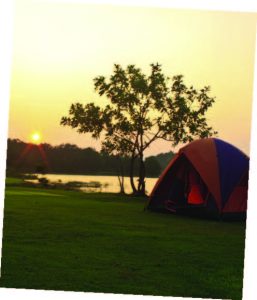 EXPLORE MORE
EXPLORE MORE
 Wild Whatcom in Bellingham, WA immerses boys and girls in exploration of the Northwest’s vast forests, wild rivers, mountainous meadows, tumbling waterfalls and pebbled beaches. “We aim to help kids discover their capabilities through suitable challenges, to better understand themselves and others,” says Laurel Peak. Wild Whatcom campers hike the Cascade ridges, watch the sunset over the Pacific, sleep under a star-studded sky, and play games that promote meaningful connections and new discoveries.
Wild Whatcom in Bellingham, WA immerses boys and girls in exploration of the Northwest’s vast forests, wild rivers, mountainous meadows, tumbling waterfalls and pebbled beaches. “We aim to help kids discover their capabilities through suitable challenges, to better understand themselves and others,” says Laurel Peak. Wild Whatcom campers hike the Cascade ridges, watch the sunset over the Pacific, sleep under a star-studded sky, and play games that promote meaningful connections and new discoveries.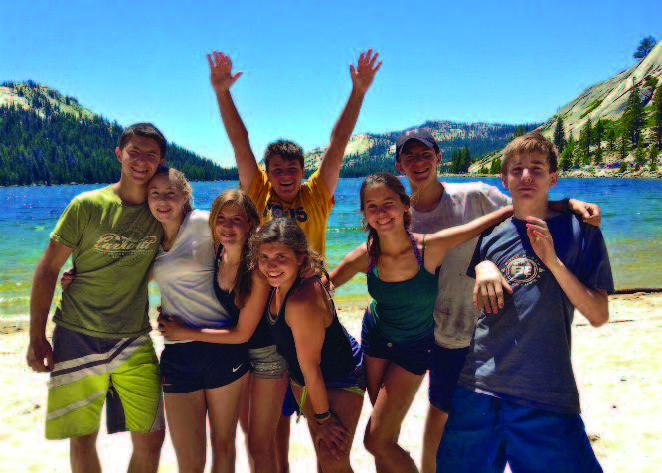














 stub
stub 1977 original press photo with Jimmy Carter
1977 original press photo with Jimmy Carter


 1979 People magazine
1979 People magazine
 1991 Starline trading card
1991 Starline trading card


 1978 Sgt. Pepper’s souvenir
1978 Sgt. Pepper’s souvenir

 Our savory Miso Glazed Salmon—accompanied with jasmine shrimp, fried rice and an aromatic citrus yuzu coconut sauce—is one of many sensational seasonal menu items. Order online!
Our savory Miso Glazed Salmon—accompanied with jasmine shrimp, fried rice and an aromatic citrus yuzu coconut sauce—is one of many sensational seasonal menu items. Order online! Our food specials amaze! I work tirelessly to bring you the best weekly meat, fish and pasta specials. Follow us on social media to get all of the most current updates!
Our food specials amaze! I work tirelessly to bring you the best weekly meat, fish and pasta specials. Follow us on social media to get all of the most current updates!  Check out our awesome desserts brought to you by our committed staff. The variety amazes as does the taste!
Check out our awesome desserts brought to you by our committed staff. The variety amazes as does the taste! Our refreshing Mango Guac is sure to bring the taste of the Southwest to Morristown.
Our refreshing Mango Guac is sure to bring the taste of the Southwest to Morristown. Tender pork belly, hoisin sauce and pickled cucumber served on a Chinese bun.
Tender pork belly, hoisin sauce and pickled cucumber served on a Chinese bun.  Join us for our “speedy affordable lunches” or dinner. We suggest you try our fresh, never frozen, 18 oz. bone-in Outlaw Ribeye—featuring juicy marbling that is perfectly seasoned and fire-grilled by our expert Grill Masters. Make sure to also try our amazing chicken and seafood dishes, as well.
Join us for our “speedy affordable lunches” or dinner. We suggest you try our fresh, never frozen, 18 oz. bone-in Outlaw Ribeye—featuring juicy marbling that is perfectly seasoned and fire-grilled by our expert Grill Masters. Make sure to also try our amazing chicken and seafood dishes, as well. Be it a sizzling filet in the steakhouse or our signature burger in the tavern upstairs, Ursino is sure to please the most selective palates. Our carefully composed menus feature fresh, seasonal ingredients and reflect the passion we put into each and every meal we serve.
Be it a sizzling filet in the steakhouse or our signature burger in the tavern upstairs, Ursino is sure to please the most selective palates. Our carefully composed menus feature fresh, seasonal ingredients and reflect the passion we put into each and every meal we serve.
 1963
1963  1964
1964  1968
1968  1969
1969  1970
1970  1970
1970  1971
1971  1971
1971  1975
1975  1975
1975  its top stars as quick-hit moneymakers. Cash proved to his fellow musicians and their labels that a live album could be its own sensational work of art and soon everyone was investing in concert recordings. The technology of the 1970s was crude by modern standards, but there was enough engineering talent to clean up the background noise without losing the crackling energy of performers playing to their Joel Baldwin/Look Magazine adoring fans. By the early 1980s, however, live albums had fallen out of favor. MTV triggered a brief revival with its Unplugged series, but we may never see (or hear) albums like the ones we plucked out of the record store racks all those years ago.
its top stars as quick-hit moneymakers. Cash proved to his fellow musicians and their labels that a live album could be its own sensational work of art and soon everyone was investing in concert recordings. The technology of the 1970s was crude by modern standards, but there was enough engineering talent to clean up the background noise without losing the crackling energy of performers playing to their Joel Baldwin/Look Magazine adoring fans. By the early 1980s, however, live albums had fallen out of favor. MTV triggered a brief revival with its Unplugged series, but we may never see (or hear) albums like the ones we plucked out of the record store racks all those years ago. 1975
1975  1976
1976  1976
1976  1976
1976 
 1978
1978  1978
1978  1984
1984  1985
1985  1986
1986  1986
1986  1992
1992  1994
1994  1961
1961  1963
1963  1994
1994  2001
2001  2016
2016  2018
2018 

 resupply stop in Mas a Terra, an uninhabited island off the coast of Chile, Selkirk insisted he would not sail unless much-needed repairs were made. Captain Stradling took the unruly Selkirk at his word and abandoned him on the island with a musket, hatchet, knife, cooking pot and Bible. The Cinque Ports sailed away…and soon sank.
resupply stop in Mas a Terra, an uninhabited island off the coast of Chile, Selkirk insisted he would not sail unless much-needed repairs were made. Captain Stradling took the unruly Selkirk at his word and abandoned him on the island with a musket, hatchet, knife, cooking pot and Bible. The Cinque Ports sailed away…and soon sank.  what appeared to be mortal wounds. After dragging the unresponsive Glass on a litter two days, the expedition’s leader decided he was slowing down their progress and assigned two members of the party to stay with him until he died. While the two men waited for the inevitable, they dug a shallow grave. When the inevitable didn’t come quickly enough, they stripped Glass of his valuables and placed him in the hole they had dug. When the men caught up with the expedition they dutifully reported the sad news of their companion’s demise.
what appeared to be mortal wounds. After dragging the unresponsive Glass on a litter two days, the expedition’s leader decided he was slowing down their progress and assigned two members of the party to stay with him until he died. While the two men waited for the inevitable, they dug a shallow grave. When the inevitable didn’t come quickly enough, they stripped Glass of his valuables and placed him in the hole they had dug. When the men caught up with the expedition they dutifully reported the sad news of their companion’s demise. 



 Koepcke pocketed some candy she found at the crash site and then activated the wilderness skills she learned while growing up in the Peruvian jungle with her father, a biologist, and her mother, an ornithologist. Koepcke found a river and waded downstream in knee-deep water for 10 days before discovering a small boat. She poured gasoline over her wounds to sterilize them and then fell asleep in the vessel. She was discovered the following morning by a group of fishermen, who transported her to the nearest village. Koepcke was reunited with her father, who was stunned to see her alive. She then led the recovery team to the crash site.
Koepcke pocketed some candy she found at the crash site and then activated the wilderness skills she learned while growing up in the Peruvian jungle with her father, a biologist, and her mother, an ornithologist. Koepcke found a river and waded downstream in knee-deep water for 10 days before discovering a small boat. She poured gasoline over her wounds to sterilize them and then fell asleep in the vessel. She was discovered the following morning by a group of fishermen, who transported her to the nearest village. Koepcke was reunited with her father, who was stunned to see her alive. She then led the recovery team to the crash site. an accurate answer that even includes a map. Thanks to GPS and online tools like Waze, getting lost is no longer the terror-inducing situation it was just a generation ago. Mauro Prosperi might be reluctant to admit it, but he really could have used one of those apps. He was competing in the 1994 Marathon of the Sands, a multi-day endurance race across Morocco’s slice of the Sahara Desert when a sandstorm separated him from the pack and left him alone and disoriented. Prosperi thought he was catching up, but he was actually running into neighboring Algeria.
an accurate answer that even includes a map. Thanks to GPS and online tools like Waze, getting lost is no longer the terror-inducing situation it was just a generation ago. Mauro Prosperi might be reluctant to admit it, but he really could have used one of those apps. He was competing in the 1994 Marathon of the Sands, a multi-day endurance race across Morocco’s slice of the Sahara Desert when a sandstorm separated him from the pack and left him alone and disoriented. Prosperi thought he was catching up, but he was actually running into neighboring Algeria. 
 Just because you can build a boat, it doesn’t mean you should be sailing it by yourself. Steve Callahan, a naval architect and avid sailor, designed and constructed the Napoleon Solo and sailed it across the Atlantic to England in 1981. So far so good. From the port of Penzance, at the extreme southwest tip of England, he joined a single-handed sailing race to Antigua in January 1982. Foul weather off the coast of Spain swamped many of the entries, including the Napoleon Solo, but Callahan made repairs and, though he was now out of the running, decided to complete the journey anyway. One week later, the vessel’s hull was punctured during a night storm in a collision with a whale. Callahan had time to collect a few items, including the book Sea Survival, by Dougal Robertson. He climbed into a six-person life raft and watched his foundering ship drift away.
Just because you can build a boat, it doesn’t mean you should be sailing it by yourself. Steve Callahan, a naval architect and avid sailor, designed and constructed the Napoleon Solo and sailed it across the Atlantic to England in 1981. So far so good. From the port of Penzance, at the extreme southwest tip of England, he joined a single-handed sailing race to Antigua in January 1982. Foul weather off the coast of Spain swamped many of the entries, including the Napoleon Solo, but Callahan made repairs and, though he was now out of the running, decided to complete the journey anyway. One week later, the vessel’s hull was punctured during a night storm in a collision with a whale. Callahan had time to collect a few items, including the book Sea Survival, by Dougal Robertson. He climbed into a six-person life raft and watched his foundering ship drift away.  the raft was in the “fat” part of the Atlantic that commercial airliners did not use, so no one else was close enough to detect the E-PIRB. As days turned into weeks, Callahan put Robertson’s words into action. He noticed that a kind of ecosystem developed around his raft and was able to spear or hook a variety of fish. He also created a sun still and other improvised devices that produced a pint of water a day. Callahan fended off sharks, repaired punctures, lost a third of his bodyweight and endured painful saltwater sores for 76 days before drifting to the coast of Guadeloupe.
the raft was in the “fat” part of the Atlantic that commercial airliners did not use, so no one else was close enough to detect the E-PIRB. As days turned into weeks, Callahan put Robertson’s words into action. He noticed that a kind of ecosystem developed around his raft and was able to spear or hook a variety of fish. He also created a sun still and other improvised devices that produced a pint of water a day. Callahan fended off sharks, repaired punctures, lost a third of his bodyweight and endured painful saltwater sores for 76 days before drifting to the coast of Guadeloupe. 